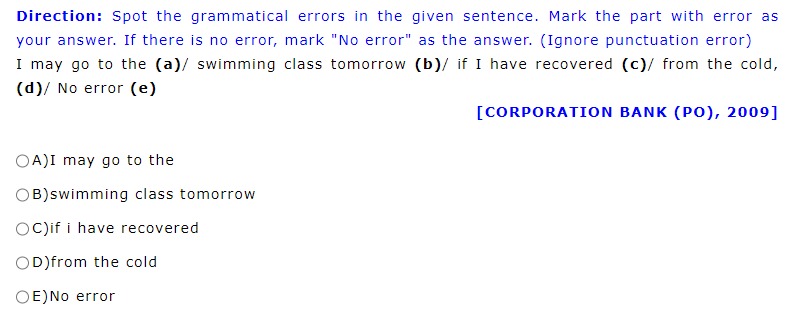Tenrycolle.com
What better to do than, share your English knowledge with other people
Tenrycolle.com
What better to do than, share your English knowledge with other people
What better to do than, share your English knowledge with other people
What better to do than, share your English knowledge with other people

Test is a method to determine a person’s ability, knowledge, or performance in a given domain.
Test is a process that is administered to measure students’ student’s ability to performance in a particular field in a certain time limit with some specific goal. It generally acts as a gate pass in teaching for students to go ahead in learning.
Thus, test is refers to a tool, technique or a method to measure the students` ability, knowledge, and performance. In other words, it is used to measure students` abilities or competencies.
Brown (1994, p. 259) defines an achievement test as “tests that are limited to particular material covered in a curriculum within a particular time frame”.
This kinds of test are designed primarily to measure individual progress rather than as a means of motivating or reinforcing language. Ideally, achievement tests are rarely constructed by classroom teacher for a particular class.
A diagnostic test is designed to diagnose some particular linguistic aspects.
Example: Diagnostic tests in pronunciation, (determining which particular phonological features of the English language are more likely to pose problems)
Diagnostic language tests have a three-fold objective:
Ideally, diagnostic tests are designed to assess students’ linguistic knowledge (knowledge of and about the language) and language skills (listening, speaking, reading and writing) before a course is begun.
A language aptitude test tends to measure a learner aptitude for language learning.
Language aptitude tests usually consist of several different test items which measures such abilities as:
A placement test is designed to place learners at an appropriate level in a program or course. The term “placement test” as Richards et al. (1989) note does not refer to what a test contains or how it is constructed, but to the purpose for which it used.
A proficiency test is devised to measure how much of a language someone has learned. It is not linked to any particular course of instruction, but measures the learner’s general level of language mastery. Some proficiency tests have been standardized for worldwide use, such as the well-known American tests, the TOEFL.
It requires that the test-taker should provide a short answer to the question asked.
Example:
Who is the first President of Indonesia?
It requires the test-taker to provide or complete one or more missing words in a sentence.
Example:
_____________ is the first president of Indonesia.
A statement is presented and required the test-taker to state whether it is true or false, Yes or No, Agree or disagree, etc. There are only two options.
Example:

Arrangement: In this case, some concepts are presented for the test-taker to arrange them in a particular order.
Example:

It has two parts. The first is called the stem or premise, which is the question, while the second is the suggested answers called alternatives, options, or choices. The correct option is the answer or the key, while other options are called distractors or distracters. Matching
In this case, two parallel columns or lists are involved. One list contains the questions or the premises, while the other.
Example:

Cloze test is test based on a text with gaps that are put there regularly after every seventh, eighth, or ninth word. The examinee has to complete the gaps with appropriate words. Mostly more than one option is possible. The first three or more lines of the text are without gaps (Scrivener, p. 261).
The examiner dictates a text, and students write it down. It examine mainly spelling or pronunciation and also listening.
This method is often mixed up with a cloze test, but it is an entirely different type. This type can be used for various purposes; it can test, for example, irregular verbs or prepositions (Scrivener, p.183). The examiner creates some sentences with gaps, and the test-taker has to complete them, but we have to avoid more than one possible answer (Ur, p. 38).
Example of gap-filling with there is/there are:
______ a little dog in the park; ______ also a big cat. In this house, ______ eight little rooms and a big kitchen. ______ two lamps on the wall but ______ only one lamp on that wall (Rosset, p.8).
In this type, test-taker has given sentences that they have to put into another form, for example, to put sentences in simple past tense into past perfect tense (Ur, p. 38).
Example:

Test-taker are given sentences with errors which concern mainly grammar (verb forms, missing verbs or letters, etc.). Their task is to find the mistakes and correct them.
Example:

The examinee has to write a text on a given topic and mostly in a particular length and form. It tests writing abilities, and it is not difficult to prepare. However, it is very demanding and time-consuming to correct such essays because the examiner has to watch many aspects of the language such as spelling, grammar, vocabulary, punctuation, etc. (Ur, p. 41).
Example:

It is based on a reading of a text. Doff (1988) explained, test-taker do not answer any questions, but they write some information about the text, and this way, they show if they have understood it.
Example
Complete this table.
| Part of tree | Use |
| flesh of fruit | food, drink, flour |